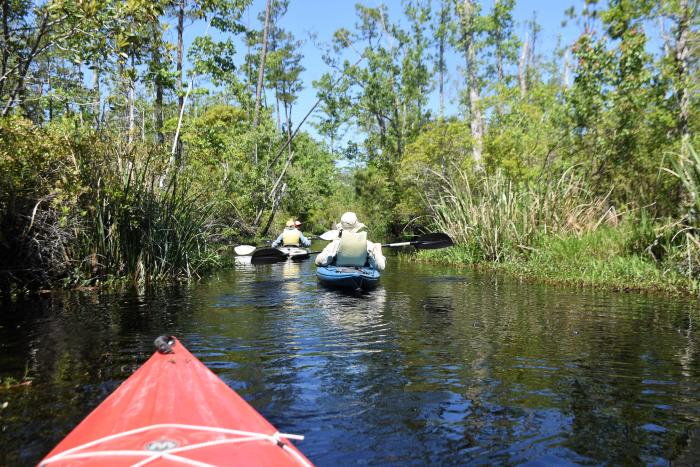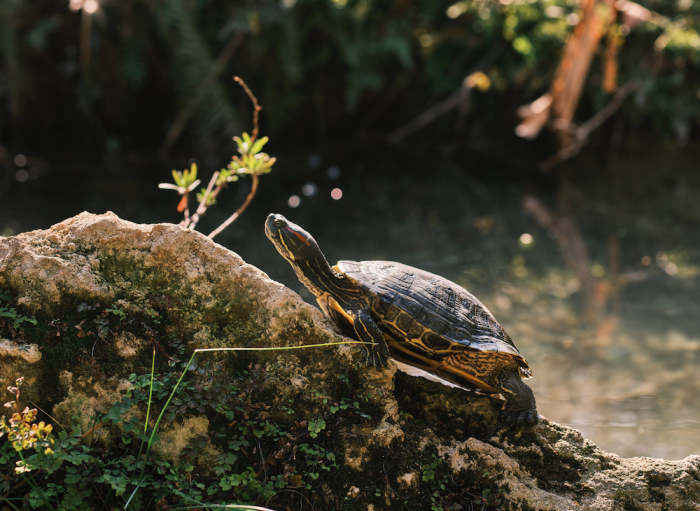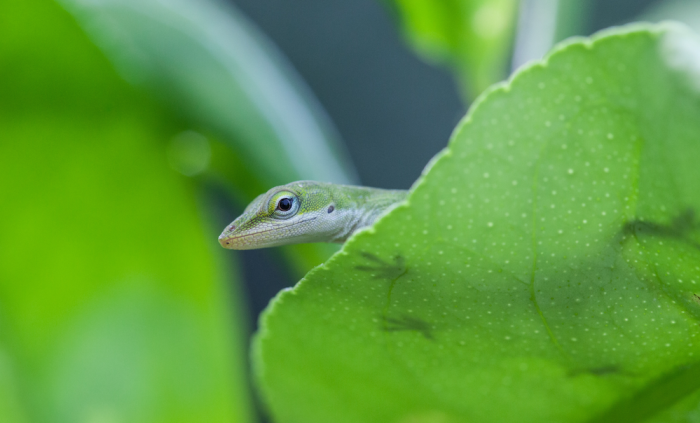We can all agree that the Outer Banks has a strong reputation for amazing natural beaches, but there’s a whole other world waiting in the woods and wetlands that line the barrier islands for 100 miles. The many estuaries, marshes, grass- and woodlands provide the habitats for rich biodiversity, and you can expect to see anything from bears to dolphins and seals, as well as a massive variety of plants from up and down the east coast.
And as you’d expect from such a diverse environment, that includes plenty of reptiles too! Like every other ecosystem in the southern United States, reptiles play a variety of important and unique roles, yet are often overlooked in favor of the typically more obvious mammals and birds. Dare County and the OBX are home to all sorts of interesting reptiles – with around 59 documented unique species and likely many more still waiting to be made official! So if you’re interested in ever visiting the Outer Banks of North Carolina and want to know a bit more about its scalier wildlife, read this article and explore some of the many reptiles you may encounter!

American Alligator
Perhaps one of the most recognizable and famous members of the reptile world, Dare County sits right at the northern edge of the American alligator’s native range. These prehistoric animals have been around since the time of the dinosaurs and are still one of the top ‘dogs’ of the natural world.
Their large jaws, thick-scaled armor, and powerful tails make them an incredibly effective predator, and as members of the crocodilian family they’re easily some of the biggest reptiles in the world – with some reaching lengths of 12ft and weighing up to 1000lbs! While you likely won’t find any alligators on the beaches or in the ocean, the aptly-named Alligator River National Wildlife Refuge further inland has loads of them to spot.
Sea Turtles
Another famous reptile of the coast, many different species of sea turtles can be found in the OBX and surrounding waters. These include some of the most common sea turtles, like the Loggerhead, Green, and Hawksbill, as well as more rarer species like the tiny Kemp’s Ridley and the giant Leatherback. These turtles come in a variety of colors, shapes, and shell/scute patterns, and can be seen at their seasonal nesting sites at the shore, or if you’re lucky, in the sea itself.
It’s important to keep your distance if you do spot one of these incredible animals, as many of them are critically endangered and need to feel safe at the OBX in order to keep coming back every Spring to lay eggs. So make sure to listen to the local rules and wildlife experts when encountering any sea turtles on the beach. You can also see them in temporary care up close is the STAR Center at the NC Aquarium on Roanoke Island.

Freshwater Turtles
Just like their ocean-faring cousins, there’s a variety of freshwater turtle species that call Dare County home. Yellow-bellied sliders (pictured below) and Diamondback terrapin are fairly frequent sites, as are Eastern painted, mud, and box turtles – the official state reptile of North Carolina, in fact! Rarer sites include the colorful red-bellied and spotted turtles, and the prehistoric common snapping turtle.
Most of these species can be found in and around ponds, lakes, rivers, and marshlands throughout OBX, though unfortunately many of them are threatened or endangered species whose numbers are not what they used to be. Due in large part to habitat loss over the years, many turtles may be hard to find on occasion, so your best bet to experience the true species diversity is the various wildlife refuges of the region.

Lizards
The Outer Banks and especially mainland Dare County are indigenous to about 10 different lizard species – a fairly small number compared to its location in the southeast, but not too surprising considering its more coastal environment and lizard’s typically terrestrial lifestyle. In no way does that impact the distinctness of the OBX’s lizard population though, as the uniqueness of these species can attest too.
Several types of skinks, including the five-lined, broadhead, and ground skinks can be found throughout the forests, wetlands, and even beaches of Dare County. The five-lined in particular are the only skink that can be commonly found in the OBX islands themselves. Arboreal lizards like green anoles (pictured below) and fence lizards are pretty common sites in trees and on buildings as well.
Perhaps most interestingly though are the several species of glass lizards – a species known for their long, smooth, and legless bodies – that call this region home. The slender, mimic, and eastern glass lizards all prefer habitat such as the fields, wetlands, and sandy shrubbery of the OBX, making it an excellent place to look for them!
Snakes
Last and the opposite of least is the various snakes that can be found in the region. Snakes seem to make up the majority of Dare County’s reptile diversity, with 32 of the 59 documented species having a forked tongue and no legs! This isn’t too surprising though, as snakes are very well-adapted for rougher and more diverse ecosystems like the OBX, being both strong swimmers, climbers, and burrowers.
As you’d probably expect, the 2 native water snakes of eastern North America, the common and banded water snakes, call this estuarine environment a great home. Many widespread species can also be found here, such as black/rat, corn, milk, and garter snakes (pictured below). Members of the viper family tree like copperheads, cottonmouths, and rattlesnakes live alongside several species each of hognose and king snakes.
With so much serpentine diversity, its arguably more of a challenge to not see a snake or two – especially as many of these species are extremely mobile and adaptable, letting them thrive in nearly every environment the area has to offer. Though of course, you’ll always have better luck finding some in more natural areas like the refuges.

Summary
These barrier islands are an incredible destination full of beautiful landscapes and rich biodiversity. The estuaries and marshlands created by the sandy shifting shoreline make a perfect habitat for numerous species, including many different kinds of reptiles! Plenty of turtles – both several sea and a dozen freshwater – can be found here, alongside a huge variety of snakes.
A fairly small but very unique number of lizards call this slice of land home, and further inland you can even find the American alligator throughout the waterways, here being at the very edge of its native range. As you can see, there’s no shortage of fascinating reptiles to be found on the eastern edge of North Carolina – so if you live nearby or are planning a trip, make sure to keep an eye out and learn how to travel responsibly when you visit.


